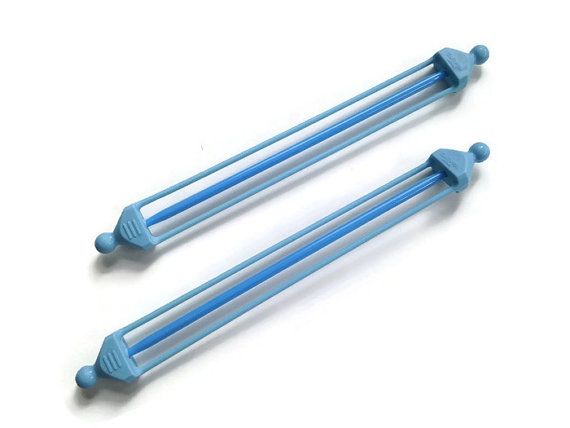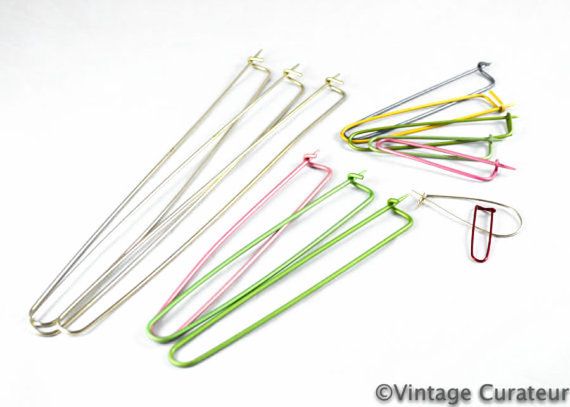Stitch holders are usually necessary. I wish someone would invent some decent ones. Ones that are flexible, that will not snag, on which the stitches will not shrink, and that can be so firmly secured that the stitches will not slip off when you hurriedly jam the work into your bag...
-Maggie Righetti, Knitting in Plain English
 |
| Shop: Buttermilk Cottage |
 |
| © S.Kate for Spindle Cat Studio |
 |
| Shop: Vintage Curateur |
Stitch holders are tools that hold live stitches when they not being used by the needles. They are generally (but not always) closed loops of some sort.
Fun Facts
- According to June Hemmons Hiatt, there are four different kinds of holders; small coilless pins, tiny single point needle with spring-held caps that snaps over the tip, double point needles with two caps, and a version for holding a large number of stitches that resembles a "jumper needle"
- this jumper needle's function is replaced by interchangeables
- June Hemmons Hiatt advises using circular needles or a few dpns with tip protectors
- While some people suggest using spare yarn as stitch holders, Maggie Righetti notes that the downsides to this are that the stitches have a tendency to shrink, and the yarn can leave flecks of unwanted fibre behind
- Large safety pins can be used, with the disadvantage of being sharp and thus easy to split your yarn on.
Further Reading
The Principles of Knitting, June Hemmons Hiatt
Knitting in Plain English, Maggie Righetti
Shop
Buttermilk Cottage
Vintage Curateur Shop
Spindlecat Studio
____________
1 Read the others here.

2 comments:
Without a doubt, every knitting bag should contain some sort of stitch holder.
For thumbs on mitts, I usually just use some smooth waste yarn, but I'm thinking for shoulders it might be best to use a dpn the same size as my knitting needles, capped on both ends.
Post a Comment